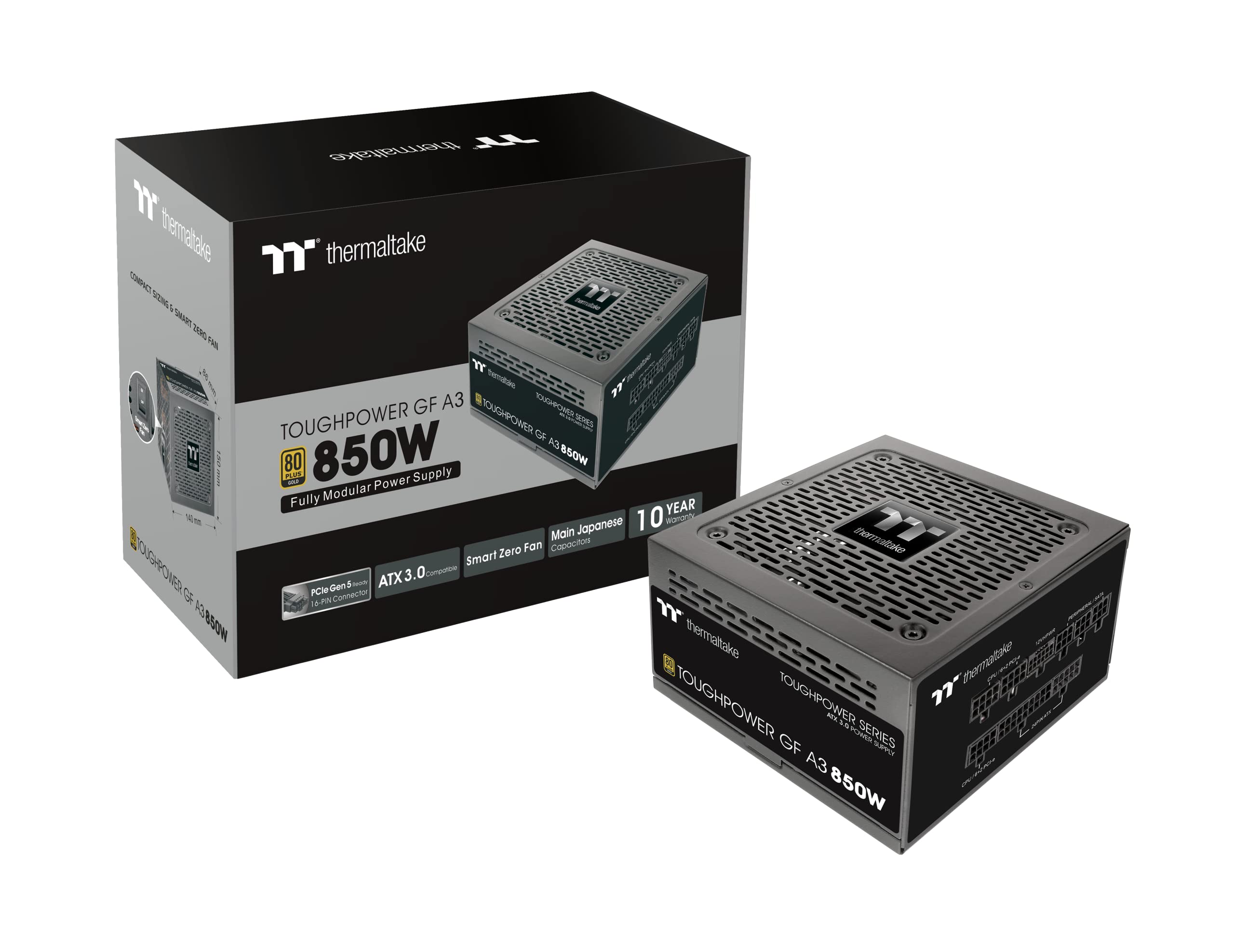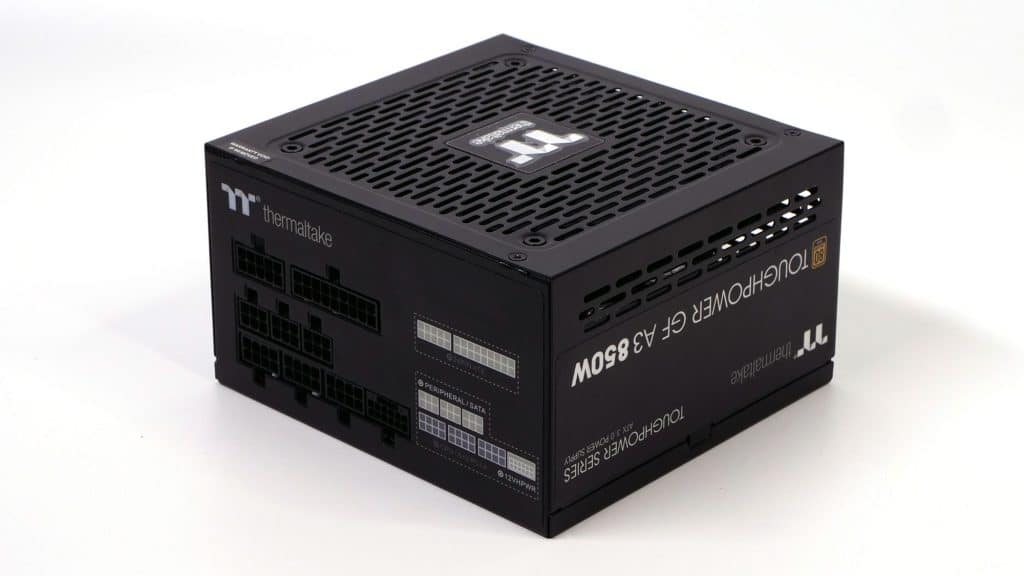Epilogue
The most vital asset of the Thermaltake GF A3 850W is the affordable price tag, at 115 dollars. Currently, the only one among the branded ATX v3.0 PSUs that is even more affordable is the MSI MAG A850GL PCIE5, costing around 5 dollars less at the time of review. Both units have almost identical overall performance, but Thermaltake’s unit achieves a big win in noise output, achieving a notably lower average noise output, with a difference of around 7 dBA. More and more users nowadays care about noise output. If I had to choose between two identical units in overall performance, I would prefer the one with the lower overall noise output.
With a tighter load regulation on the minor rails and better ripple suppression at 12V, the GF A3 850W would easily be higher in my overall performance score. Still, the minor rails’ performance is not of high importance, and you cannot call below 40 mV ripple on the 12V rail at full load and 47C as mediocre, but the fact is that the competition has set the performance bar extra high in this section.
From the cons list that you will find at the end of this page, the most important are the following:
- High inrush currents.
- OCP at 3.3V.
- The EPS connectors are on the same cable. These connectors should be on dedicated cables, with 16AWG gauges, ideally.
- Low PF readings.
I want to stress that a pair of EPS connectors on the same cable can lead to dangerous situations, especially when the typical 18AWG gauges are used up to the first connector. These connectors can easily draw more than 250W each, meaning >500W. The single 8-pin socket won’t be able to handle such power levels, and the same applies to the 18AWG gauges, which will probably go first. HKC and Thermaltake should take care of this as soon as possible.
All in all, the Thermaltake GF A3 850W is a worth considering PSU, given its affordable price tag and the good performance of the 12V rail in transient response loads, passing all ATX v3.0 tests with success.
To check all alternative PSU offerings, read my Best ATX v3.0 PSUs article before investing in a new power supply. You help me a lot by using my affiliate links, which don’t increase the product’s price. I get a commission from Amazon every time you do it, which can make a difference for me, especially now that I am on my own, working exclusively for my media and not for someone else.
- Affordable price (given its specifications)
- Delivered full power at 47°C
- High overall efficiency (Cybenetics Platinum)
- ATX v3.0 and PCIe 5.0 ready
- Extra tight load regulation at 12V
- Good transient response
- Not high overall noise output
- Efficient 5VSB rail
- Low enough vampire power at 115V
- Long hold-up time
- Decent ripple suppression on the minor rails
- Good soldering quality
- Alternative Low Power Mode (ALPM) compatible
- Fully modular
- 12+4 pin PCIe connector (450W)
- Compact dimensions (140mm depth)
- Ideal distance between the peripheral connectors (145-150mm)
- Ten-year warranty
- Both EPS on the same cable can cause trouble
- High inrush currents
- High OCP at 3.3V
- Lower than 70% efficiency with a 2% load
- APFC converter needs tuning for higher PF readings
- Loose load regulation on the minor rails
- Above 0.1W standby power at 230V




